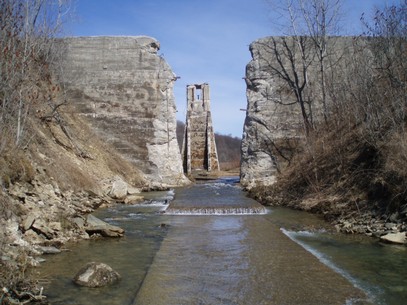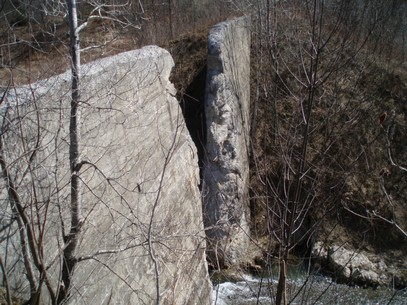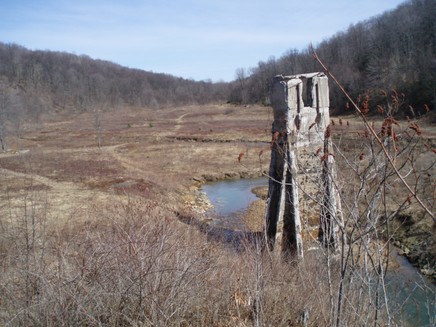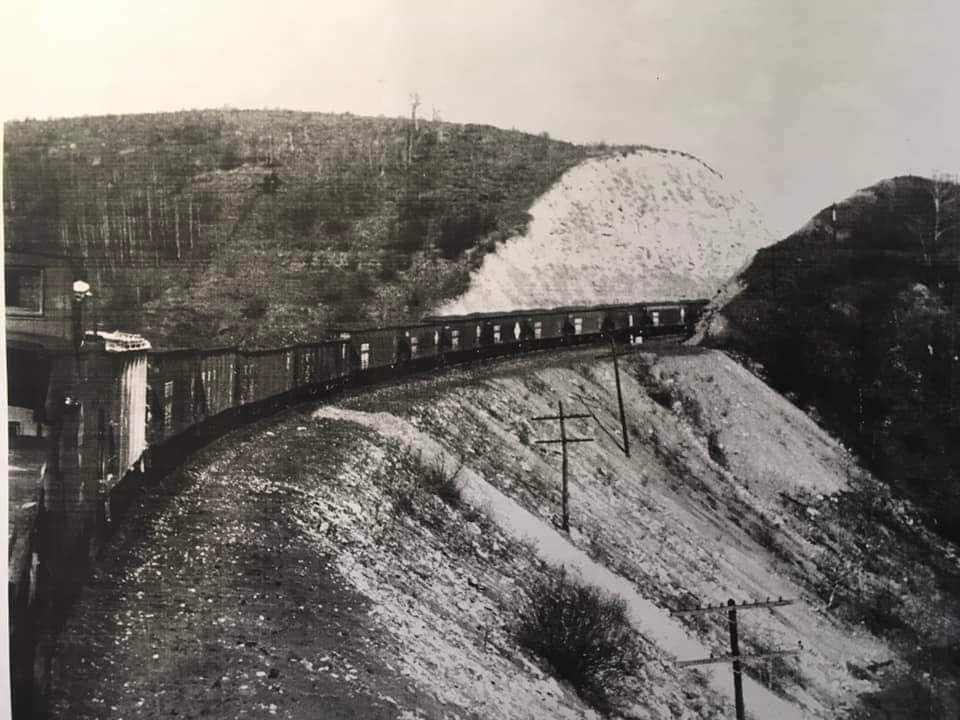The first activity at Ketner occurred when Thomas Kane erected a sawmill to cut about 600-acres of pine forest along the Erie and the Buffalo-Rochester-Pittsburgh Railroad about a mile and half east of Glen Hazel. This mill was primarily used to cut large beams up to 40-feet long to be used in the ship building industries in New Orleans. These timbers would be rafted down the Clarion and eventuality to the Mississippi River. A large timber dam was erected to provide water for the mill just below the current East Branch Restaurant (the Dam Inn).
Another sawmill was later built by the Clark & Blakeslee Group. This operation existed only a short time, as the timber owned by the company had become exhausted. After the sawmill closed, the remaining wood was considered useful for the chemical factories being built in the Glen Hazel and Middle Fork areas.
Once the construction of the railroad was completed, a passenger and freight station was built and given the name of “Ketner”. A short time later a Post Office was established here also, however it was eventually moved to Glen Hazel. The name of Ketner was given to the small community in honor of Mr. John Ketner. He was a local “mountain man” who lived nearby in a small cabin in the nearby woods. We is said to earn his living by hunting & fishing and by frequenting the Summit Hotel near Rasselas. Folklore has it that the bartender would provide a word of warning to new customers and quests at the Hotel not to start any arguments with Mr. Ketner. Being a rather tall and big-build outdoorsman, Ketner had a short temper and would surely take anyone to task that didn’t share his opinions. The bartender had indicated that Ketner, way more than once, has been known to throw bar patrons out to the middle of the road!
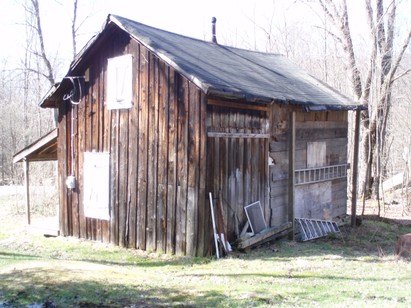
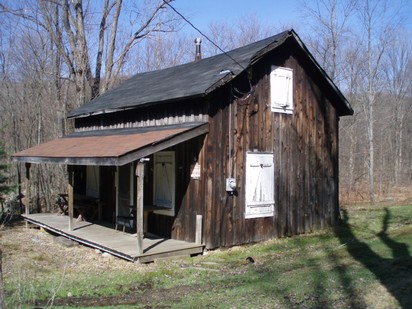
Above, One of the very few remaining buildings at Ketner; now used as a camp.
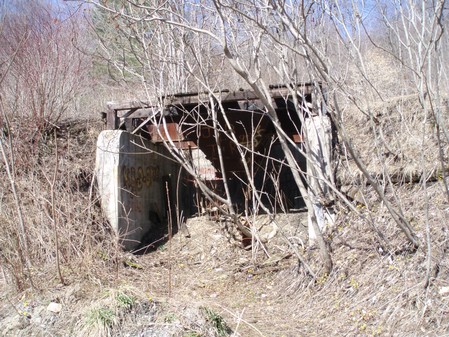
The Ketner Dam
In 1911 the Buffalo, Rochester, and Pittsburgh Railroad constructed a large concrete dam over Johnson Run near Ketner to provide the railroad with an adequate supply of water. The steam locomotives of the day required a full supply of water to travel the steep grade between Johnsonburg and Mt. Jewett. A six -inch pipe was laid, six miles long, to supply water to the Clarion Junction in Johnsonburg. The lake formed by the dam was about a half/mile in length, with the weight of the water bearing against the walls of the valley, except at it’s narrowest point which was where the railroad-rail reinforced concrete wall closed off the waters of Johnson Run.
Flanking the 50+ foot concrete dam was a handsome twin spillway which would control the lakes own level of water. The riprap which was embedded in the breast of the earthen section of the dam was painstakingly cut from native stone and huge boulders from the mountain sides. The cut stone was laid end-to-end giving a beautiful rustic look to the dam.
During construction of the dam, on August 28, 1911, an extremely heavy rainfall occurred over the time of several days. The workers noticed several tiny leaks as the dam quickly filled to it’s capacity. Soon water began to flow over the spillways. Unsure that the dam would support the weight of water, the railroad sent messengers on horseback downstream to warn residents of the impending danger. Soon all roads out of Ketner, Glen Hazel, and Johnsonburg were crowded with people escaping the low valley area.
That afternoon, the rains stopped and the flood gates of the dam were opened to relieve the weight of the water upon the concrete dam. But, just when the engineers thought all was well the rain again began to fall again, even more than before, causing the water level at the dam to fill as much as 15-inches an hour- quickly re-filling the reservoir.
By now the debris that was washed into the lake by the floodwaters plugged the flood-gates and prevented water from being released causing the water to flow over the breast of the concrete dam as well as the spillways. Engineers on-site had decided to blast a section of the concrete structure with dynamite at the center of the structure to relieve the pressure of the water. It was shortly after 8 o’clock when the first blast was sent. The first attempt failed to break the dam. Another attempt at 9:15 pm successfully breached the dam and allowed the great amounts of water to escape the valley, on it’s way to Johnsonburg. The force of the escaping water tore the earthen abutments away taking everything in it’s path with it.
Several buildings downstream were washed way. The messengers had done their job well as not one life was lost in the disaster. The flood waters dissipated over the wide East Branch River valley before reaching Johnsonburg, preventing any further damage. A frightful tragedy had been averted.
Damage at the time was estimated at well over $100,000. For a time the lake remained unfilled, Later the railroad, still in need of a dependable supply of water, built a smaller earthen / concrete dam at the same location that even utilized the existing spillways. This second dam was better built, held less water and even survived the great floods of 1942 that encouraged the construction of the East Branch Dam a mile upstream in 1947.
The Ketner Dam continued to serve the steam engines of the railroad until the new diesel engine became common. With the railroad no longer having the need of such large volumes of water, the concrete breast of dam was intentionally breeched, but only partially, in 1956 by using dynamite. A small amount of water still remained behind the remains of the old dam. In 1978, a boy who was fishing in the area drowned in an apparent attempt to save his dog. The County Commissioners then requested the Railroad to fully drain the water by removing a valve and demolishing the remainder of the dam.
